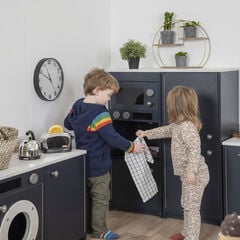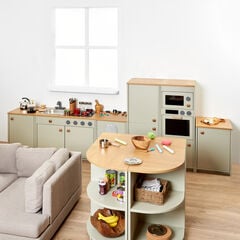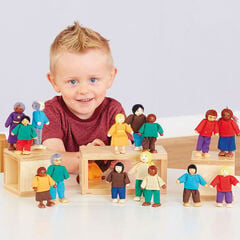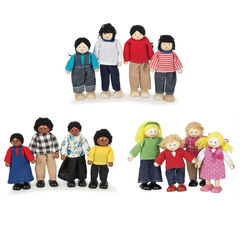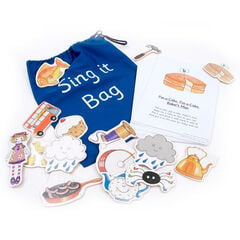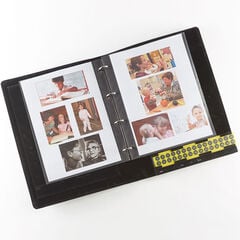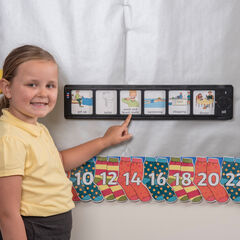In September, many young children will be starting and settling into their new Reception class. This exciting transition can bring a mix of emotions for children, parents, and teachers!
As a Reception teacher, it’s important to create a warm and welcoming environment. This will help children feel safe and happy as they start their new school experience. Also, it will make them feel positive about their future learning and education.
Here are some top tips to help settle reception children during their first week of school:
Creating a Welcoming Environment – Adding a Personal Touch
One of the best ways to help children settle in is to make them feel at home. We can achieve this by adding personal touches to the classroom environment. For instance, you can ask parents to provide photographs of the children with their families. You can place these pictures in the home corner. This will create a cosy space for children. Here, they can talk about their families with their peers and adults.
Home Corner Play
Role play in the home corner is a great way to help children feel more at home and comfortable in their new surroundings. Set up areas where children can engage in play that mimics their home life and familiar situations. Provide props and clothes that represent different family members, household items, and daily routines. Allowing children to share their feelings and experiences can help them adjust to school and feel more comfortable.
Transitional Objects
Some or all children may wish to bring a transitional object from home or one provided by their previous setting. These objects can be items such as small soft toys, a blanket, a pocket hug, photograph or a handkerchief with a parent/carers fragrance on. These objects provide comfort and help ease anxiety, making the classroom feel a bit more like home.
Settling in to Reception with Circle Time – Getting-to-Know-You Games
Introduce the class to circle time games to help children learn each other’s names, work together and get to know each other. Play different games like rolling a ball to a person in the circle and saying “My friend is…” followed by the child’s name. This helps build connections between in a low-pressure way. For more ideas, visit our Circle Time blog.
Mini Me’s and Small World Play
Another creative idea is to make ‘Mini Me’s’ by adding images of the children to small wooden blocks. The children can use these in their small-world play and other activities such as storytelling. Have other small world figures available so that they can represent people in their lives and share experiences in their play. This helps them to feel noticed and included, and creates a sense of belonging and community in the classroom.
Story Time
Reading stories together is an excellent way to calm and focus the class after the excitement of drop-off, lunch time or before going home. Choose books about starting school or making friends to address children’s anxieties and take them through daily routines. This also establishes a comforting routine they can look forward to.
Some children may find listening in a larger group challenging to start with. If so, enjoy story time in smaller groups or in one-to-one situations where appropriate.
Simple Group Activities
Incorporate short, whole-class activities to build a sense of community. Try singing songs together, playing simple games like Simon Says, or doing easy movement activities. Keep these brief and fun to maintain engagement and attention. Remember to keep activities simple and expectations flexible during this transition period.
“All About Me” Activities
Plan simple discussions and activities or games centred on the theme “All About Me”. This allows children to share information about themselves and their families while feeling successful with low-stakes activities. Consider leaving out materials in the provision for self-portraits, paintings for the classroom or to take home, or “My Favourite Things” collages.
You could use resources such as the Talking Recordable Photo Album or the Interactive Talking Wall to introduce each of the children in the class. Each child can have their picture(s) displayed, they can record their name and an interesting fact about themselves. This activity can involve everyone in the class. The children can then press the buttons to hear the recordings from their friends and find out more about them. Once the children are more familiar with each other, you can either keep the interactive class gallery or use the resource in other areas of learning.
Exploration Time
Set up your continuous provision for children to explore in free play both indoors and outside. Use toys and labels to make a friendly space and to help children find and put things back in the right spot.
You can create a classroom scavenger hunt for the children. They will need to find different resources and check them off a visual list when found. Some children like to go and make a visual list of their own for a friend to complete. Exploring the space at their own pace helps children feel comfortable. During these time, you can stand back and observe their interests and interactions.
Establishing Routines and Social Stories
Introduce key classroom routines gradually throughout the week. Use visual cues such as a visual timetable to help children understand what to expect throughout the day. For children in Reception, a recordable visual timetable can allow them to press the buttons to hear what is coming next.
Practise lining up, sitting on the carpet, and following lunch procedures. You may wish to use songs or actions to make these routines engaging and memorable.
Some children may need support to settle in with social stories. Talking through the stories and looking at the pictures can help with the understanding of routines and social situations such as going to the toilets etc.
Predictability and consistency with these routines will help children feel secure and safe.
One-on-One Time
Spending one-on-one time with each child during the first week can significantly improve their sense of belonging and help them to settle. This time could be with the teacher or their key adult. Use this precious time to get to know the children individually, learn about their interests, and build rapport. This personal attention helps the children feel valued and supported, establishing the foundations for solid relationships.
Don’t forget to take time at the beginning and end of the day to get to know the parents and carers. After all, they know the child better than anyone and building parent partnerships is crucial for the child’s future learning.
An activity that can help with getting to know the children is for them to take home a paper bag to decorate and fill it with a few items to describe themselves. Over the next few days, they can bring the bag back into school and share and talk about their bags with their peers and key adults.
Observe and Reflect
Reception teachers may feel pressured by EYFS assessments and baseline requirements. However, in the first few weeks, it’s crucial to give the children and yourself time to adjust and build relationships. Take this time to observe and evaluate what is working well and determine any tweaks that may be needed. Being attentive and responsive to the unique needs and learning behaviours of the children is essential.
Don’t hesitate to seek feedback from parents and colleagues. Parents can provide valuable insights into how their child is adjusting at home. Colleagues can share their observations and suggestions to help improve practice and support the new group of children.
5 Fun Facts to get Children Thinking, Giggling and Talking about School Life:
- In 2014, in Turin, Italy, (could show the children where this is on a map), one school had only one teacher and one child! How do you think the child felt on their first day?
- In the Netherlands, children start school on their fourth birthday. This means that different children are joining the class all through the year? What do you think this is like?
- In South Korea, children are expected to stay and clean the classrooms after school. This includes mopping, hoovering up, and taking out the rubbish. Do you like this idea? Who does these jobs in our school?
- In countries such as Bangladesh, flooding can affect some schools. Guess what they do when this happens? The children go to boat school. These boats have internet access, libraries and are powered by the sun!
- How did you travel to school this morning? Did anyone zip wire in? Did you know that in a valley in Colombia, so that children don’t have to take a 2 hour journey through the rainforest, they travel to school on a zip wire. Younger children aren’t allowed to travel alone and have to travel with a parent or older sibling. What do you think it would be like to zip wire to school every day? Do you think you would like it?

(Reference: //schooladvisor.my/articles/fun-facts-education-around-world)
And Finally…
Above all, understand that it’s fine to have a few hiccups and bumps along the way. Spend time getting to know your children and their interests. Adapting to the children and their needs allows us to create strong foundations for their future. Let’s give children the start they deserve to their educational journey.
Written by Michelle Reid. Michelle has over 20 years of experience working as a nursery nurse and qualified teacher in the Early Years and Primary Sector.
















